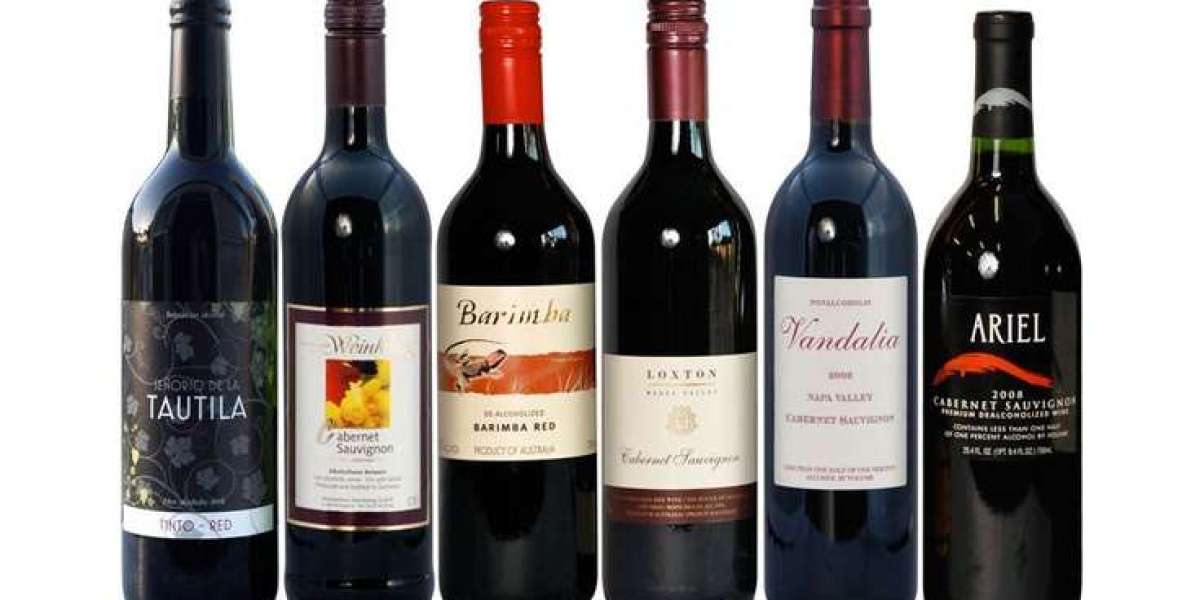Wine has always been a symbol of celebration, sophistication, and relaxation. However, in recent years, there has been a noticeable shift in drinking habits around the world. People are becoming more conscious about their health, lifestyle choices, and overall well-being. This shift has led to a growing demand for non-alcoholic wines. These beverages offer the same refined flavors and aromas of traditional wines but without the intoxicating effects of alcohol. Non-alcoholic wines are not just an alternative; they have become a trend, embraced by both casual drinkers and wine connoisseurs.
Unlike sugary soft drinks or juices, non-alcoholic wines are carefully crafted to mirror the complexity of traditional wines. They are often produced using the same grape varieties, fermentation processes, and aging techniques before the alcohol is removed. This means consumers can enjoy the ritual of pouring a glass of wine and savoring its taste, but without worrying about the consequences of alcohol consumption.
How Non-Alcoholic Wines Are Made
Many people wonder how non-alcoholic wine can taste so much like traditional wine. The process begins with grapes that are cultivated, harvested, and fermented in the same way as any other wine. After fermentation, however, the alcohol is carefully removed. This can be done using methods such as vacuum distillation, reverse osmosis, or spinning cone technology.
Vacuum Distillation gently heats the wine under reduced pressure, allowing alcohol to evaporate at lower temperatures while preserving flavor.
Reverse Osmosis filters the wine to separate alcohol from water and flavor compounds, then recombines the non-alcoholic elements for a balanced taste.
Spinning Cone Technology is one of the most advanced methods, where flavor and aroma compounds are separated and preserved before alcohol is removed, ensuring the wine retains its depth and complexity.
Through these techniques, winemakers create beverages that provide the authentic taste and experience of wine while keeping the alcohol content extremely low, usually below 0.5%.
The Rising Popularity of Non-Alcoholic Wines
The popularity of non-alcoholic wines has surged in recent years. This is not only due to health-conscious consumers but also because of the growing “sober curious” movement. More people are choosing to reduce their alcohol intake for reasons such as fitness goals, mental clarity, or simply as part of a healthier lifestyle.
Non-alcoholic wines are also becoming common at restaurants, weddings, and corporate events. They allow hosts to provide inclusive options for guests who may be pregnant, driving, or simply not drinking alcohol. This inclusivity is a big reason why more venues now proudly feature non-alcoholic wines on their menus.
Health Benefits of Non-Alcoholic Wines
Non-alcoholic wines are not only delicious but also come with several benefits that make them an attractive option.
Lower Calorie Content
Since most of the alcohol is removed, non-alcoholic wines tend to have fewer calories compared to traditional wines. This makes them appealing to individuals who are conscious about their weight or managing their calorie intake.
Rich in Antioxidants
Like traditional wines, non-alcoholic versions often retain polyphenols and antioxidants such as resveratrol, which are known for their potential heart-protective effects.
Supports Heart Health
Research suggests that some non-alcoholic wines may help in reducing blood pressure and improving circulation, offering similar cardiovascular benefits to regular wines but without the risks linked to alcohol.
Better Sleep and Focus
Alcohol can disrupt sleep patterns and affect focus the next day. Non-alcoholic wines allow people to enjoy the ritual of drinking without these negative effects.
Safe for More People
Pregnant women, designated drivers, and those avoiding alcohol for medical or personal reasons can all enjoy the taste of wine without concern.
Types of Non-Alcoholic Wines
Just like traditional wines, non-alcoholic wines come in a variety of types to suit different palates and occasions.
Non-Alcoholic Red Wines
Rich, bold, and full of depth, non-alcoholic red wines often carry notes of berries, oak, and spices. They pair well with hearty dishes like pasta, steak alternatives, or roasted vegetables.Non-Alcoholic White Wines
Crisp and refreshing, non-alcoholic white wines usually highlight citrus, apple, and floral notes. They are ideal for light meals, seafood alternatives, or warm summer evenings.Non-Alcoholic Rosé Wines
Rosé has gained massive popularity in recent years, and its non-alcoholic counterpart is no exception. With flavors of strawberry, watermelon, and subtle floral hints, it’s perfect for brunches or casual gatherings.Non-Alcoholic Sparkling Wines
Often chosen for celebrations, sparkling wines bring the bubbles and festive atmosphere without the alcohol. They are popular at weddings, New Year’s Eve parties, and milestone events.
Pairing Food with Non-Alcoholic Wines
Pairing non-alcoholic wines with food enhances the dining experience, just like traditional wines.
Red Non-Alcoholic Wines pair well with grilled dishes, mushrooms, lentils, or vegan meats.
White Non-Alcoholic Wines are great with salads, fish alternatives, and light pasta.
Rosé Non-Alcoholic Wines complement charcuterie boards, fruit platters, and Mediterranean cuisine.
Sparkling Non-Alcoholic Wines are versatile and can be enjoyed with appetizers, desserts, or even on their own.
By experimenting with different pairings, drinkers can discover how non-alcoholic wines elevate a meal without overpowering it.
The Social and Lifestyle Aspect
For many people, wine is not just about taste; it’s about socializing and tradition. Non-alcoholic wines allow individuals to remain part of the social experience while staying aligned with their lifestyle goals. Whether at a dinner party, business event, or family gathering, non-alcoholic wines help break the stigma of not drinking alcohol.
This inclusivity has become a strong reason behind their popularity, making non-alcoholic wines not just a beverage choice but a lifestyle statement. They symbolize moderation, balance, and conscious living.
Choosing the Best Non-Alcoholic Wine
With so many brands now offering non-alcoholic wines, choosing the right one can feel overwhelming. A few tips include:
Look for Reputable Brands that specialize in non-alcoholic wines and have positive reviews.
Check the Label to see the alcohol percentage (should be 0.0%–0.5%).
Consider Your Taste Preferences – whether you enjoy bold reds, crisp whites, or bubbly options.
Experiment with different varieties and pairings to find your favorite.
Some popular brands globally recognized for quality include Ariel, Freixenet, and Pierre Chavin. Many boutique wineries also specialize in unique, handcrafted non-alcoholic wines.
The Future of Non-Alcoholic Wines
The market for non-alcoholic wines is expected to grow significantly in the coming years. As more consumers prioritize wellness and mindful drinking, the demand will continue to rise. Innovation in production techniques is also ensuring that flavors get closer and closer to traditional wines, removing the gap that once existed.
Restaurants, airlines, and retailers are increasingly adding non-alcoholic wines to their offerings. With this widespread acceptance, it is clear that non-alcoholic wines are here to stay.
Conclusion
Non-alcoholic wines represent more than just a beverage; they embody a lifestyle choice focused on wellness, inclusivity, and enjoyment. They allow individuals to celebrate life's moments, enjoy the complexity of wine, and participate in social traditions without the effects of alcohol. Whether you are reducing alcohol intake, choosing healthier options, or simply exploring new tastes, non-alcoholic wines provide a perfect solution.








